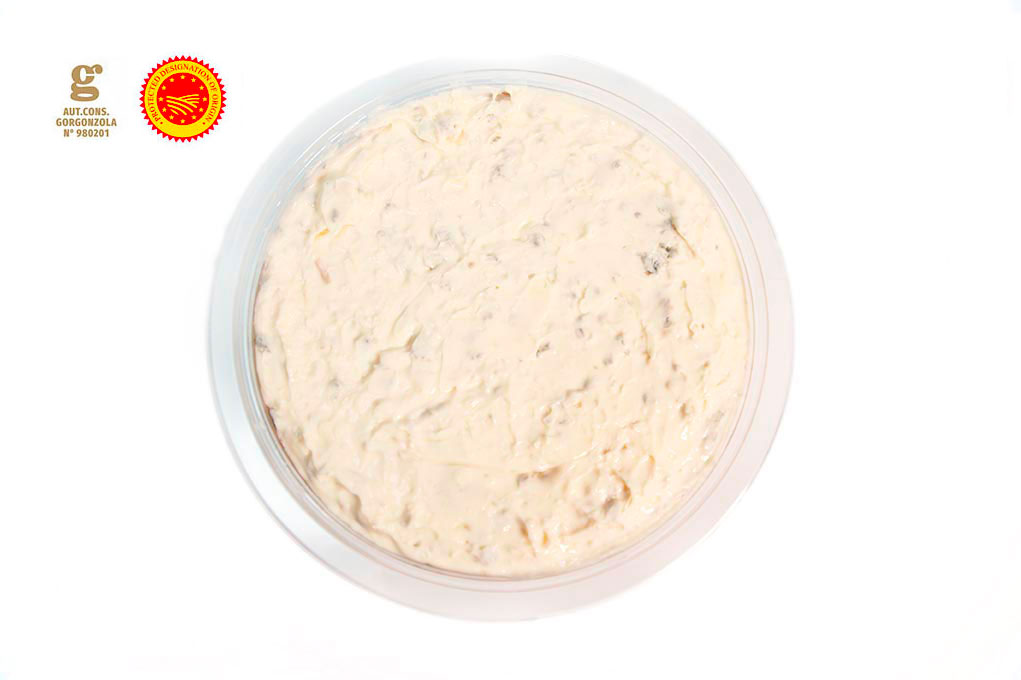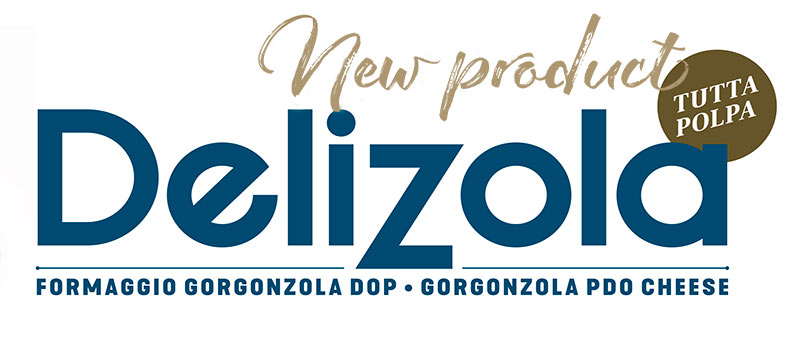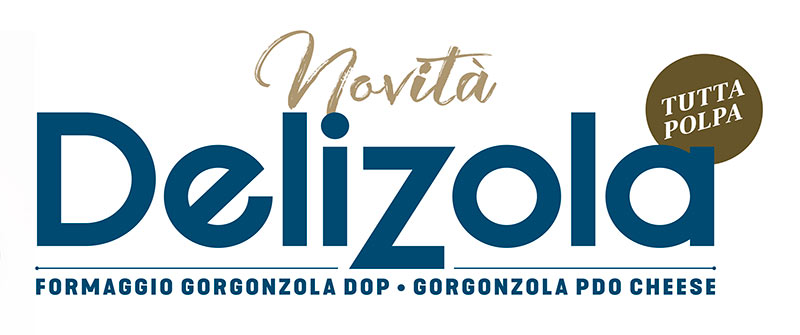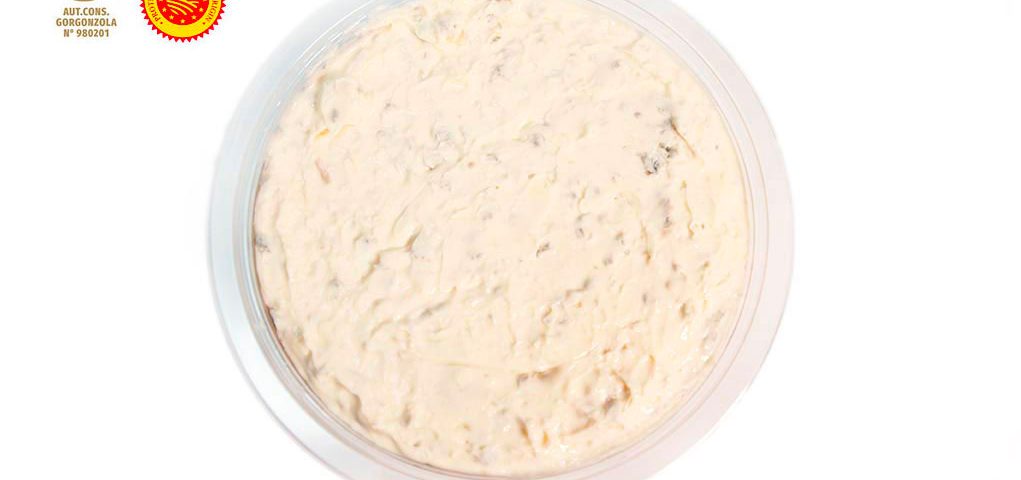- HOME
- PRODUCTS
- Cheeses
- Outstanding PDO products, Similar, Grated
- Taleggio, Quartirolo, Gorgonzola, Fontal
- Provolone, Provole, Scamorze, Pecorino romano
- Lombard, Piedmontese and Aosta Valley
- Venetian, Friulan, from Trentino, Tuscan
- Sardinian, Sicilian, Calabrian
- Goat cheese, Dairy of Upper Langa
- Swiss, French, EU countries and Specialties
- Fresh cheeses and Mozzarella
- Unique Cheese
- Cured meats
- Cheeses
- ABOUT US
- NEWS
- FAQ
- CONTACTS


- HOME
- PRODUCTS
- Cheeses
- Outstanding PDO products, Similar, Grated
- Taleggio, Quartirolo, Gorgonzola, Fontal
- Provolone, Provole, Scamorze, Pecorino romano
- Lombard, Piedmontese and Aosta Valley
- Venetian, Friulan, from Trentino, Tuscan
- Sardinian, Sicilian, Calabrian
- Goat cheese, Dairy of Upper Langa
- Swiss, French, EU countries and Specialties
- Fresh cheeses and Mozzarella
- Unique Cheese
- Cured meats
- Cheeses
- ABOUT US
- NEWS
- FAQ
- CONTACTS


Spoonable gorgonzola blue cheese: how to handle, preserve and serve it

Aromatised Pecorino Roccastrada: Rognoni cheese selection
24 March 2021
Special Mountain Cheese (Part 1)
23 September 2022



We all know that gorgonzola blue cheese is one of the cheeses that your customers appreciate most, partly because of its versatility: it can be taken as a perfect end to a good meal or as a precious ingredient for tasty recipes. Rognoni doesn’t stop here and proposes it in a unique formula conceived for those who run a delicatessen counter.
ZERO waste and ALL Protected Denomination of Origin (PDO) pulp.
In making Delizola Rognoni, we thought first of all of those who operate in the catering sector, imagining a product that not only assures maximum PDO quality, but has no waste… right up to the last wonderfully creamy drop.
It is gorgonzola PDO, authorised by the Consortium for the Protection of Gorgonzola DOP. It isn’t a derivate, it is the creamy heart of the best quality soft Gorgonzola PDO forms. It is processed exactly as the form is, but the pulp is separated from the rind after 60 days.
In addition to other very important stages in the process, the Consortium for the Protection of Gorgonzola DOP requires between 50 and 80 days’ ageing (much also depends on the size of the form) in order to be able to put DOP on the label. This time is necessary to enable the process of transformation of proteins (proteolysis) to take place and for the development of the moulds that make the pulp creamy and give it the slightly spicy flavour that we know so well.
A “must have” for a food counter that you want to be different.
We all know that gorgonzola blue cheese is one of the cheeses that your customers appreciate most, partly because of its versatility: it can be taken as a perfect end to a good meal or as a precious ingredient for tasty recipes. Rognoni doesn’t stop here and proposes it in a unique formula conceived for those who run a delicatessen counter.
ZERO waste and ALL Protected Denomination of Origin (PDO) pulp.
In making Delizola Rognoni, we thought first of all of those who operate in the catering sector, imagining a product that not only assures maximum PDO quality, but has no waste… right up to the last wonderfully creamy drop.
It is gorgonzola PDO, authorised by the Consortium for the Protection of Gorgonzola DOP. It isn’t a derivate, it is the creamy heart of the best quality soft Gorgonzola PDO forms. It is processed exactly as the form is, but the pulp is separated from the rind after 60 days.
In addition to other very important stages in the process, the Consortium for the Protection of Gorgonzola DOP requires between 50 and 80 days’ ageing (much also depends on the size of the form) in order to be able to put DOP on the label. This time is necessary to enable the process of transformation of proteins (proteolysis) to take place and for the development of the moulds that make the pulp creamy and give it the slightly spicy flavour that we know so well.
HERE IS SOME PRACTICAL ADVICE FOR HANDLING ROGNONI SPOONABLE GORGONZOLA IN THE BEST POSSIBLE WAY.
HERE IS SOME PRACTICAL ADVICE FOR HANDLING ROGNONI SPOONABLE GORGONZOLA IN THE BEST POSSIBLE WAY.
As we have just said, our Delizola is quite unique of its kind. Unlike other similar products, our spoonable gorgonzola is totally without a rind, so that it is a product whose entire weight can be sold, that is to say 2.5 kg (5 lb 8 oz) of pulp.
Generally speaking, all cheeses, and gorgonzola especially, are affected by sharp rises and falls in temperature.
If you have a food store and sell gorgonzola by the spoon at the delicatessen counter, at the end of the day you can put it in a refrigerator that keeps a temperature ranging between 4° and 5°C. Otherwise, if the cool counter in the store is set at these temperatures, you can safely leave it on the counter.
Another precaution to take is not to remove or tear the hydro-polythene paper for the protection of food products that you find when you open the Delizola wrapping.
As well as temperature, another critical factor for gorgonzola is oxygenation, which accelerates its deterioration. So, make sure at the end of the day that the protective film adheres closely to the remaining Delizola pulp.
On the other hand, if you use Delizola for a catering service, it is a good rule only to take the packet out of the refrigerated area a few minutes before serving it.
Like all of you, we hope that we will soon go back to normal so that tables can soon be laid for parties, special events and receptions.
.
As we have just said, gorgonzola is very much affected by sharp rises and falls in temperature. We know that in the kitchen of a restaurant, especially when work is in full swing, there is a substantial difference between the temperature in the main part of the kitchen and that in the refrigerated area.
Our suggestion is to start separating the quantity of gorgonzola necessary for the menu before the staff put the cookers on in order to preserve the sensory qualities of the Delizola and its freshness unaltered as long as possible. And always keep it in a refrigerator that remains at a temperature between 4° and 6°C.
Even if gorgonzola is a so-called “fat” cheese, it has a “sensitive” spirit and, by its nature, tends to absorb the smells, sometimes strong smells, that are to be found in a delicatessen department. Consequently, it would be good practice to keep it separate from products with lingering scents.
As a final hint, we suggest that you do not use a spoon to serve Delizola Rognoni to your customers, but a delicatessen spatula, whose shape helps you to ensure you get all the contents out of the tub.
.
As we have just said, our Delizola is quite unique of its kind. Unlike other similar products, our spoonable gorgonzola is totally without a rind, so that it is a product whose entire weight can be sold, that is to say 2.5 kg (5 lb 8 oz) of pulp.
Generally speaking, all cheeses, and gorgonzola especially, are affected by sharp rises and falls in temperature.
If you have a food store and sell gorgonzola by the spoon at the delicatessen counter, at the end of the day you can put it in a refrigerator that keeps a temperature ranging between 4° and 5°C. Otherwise, if the cool counter in the store is set at these temperatures, you can safely leave it on the counter.
Another precaution to take is not to remove or tear the hydro-polythene paper for the protection of food products that you find when you open the Delizola wrapping.
As well as temperature, another critical factor for gorgonzola is oxygenation, which accelerates its deterioration. So, make sure at the end of the day that the protective film adheres closely to the remaining Delizola pulp.
On the other hand, if you use Delizola for a catering service, it is a good rule only to take the packet out of the refrigerated area a few minutes before serving it.
Like all of you, we hope that we will soon go back to normal so that tables can soon be laid for parties, special events and receptions
.
As we have just said, gorgonzola is very much affected by sharp rises and falls in temperature. We know that in the kitchen of a restaurant, especially when work is in full swing, there is a substantial difference between the temperature in the main part of the kitchen and that in the refrigerated area.
Our suggestion is to start separating the quantity of gorgonzola necessary for the menu before the staff put the cookers on in order to preserve the sensory qualities of the Delizola and its freshness unaltered as long as possible. And always keep it in a refrigerator that remains at a temperature between 4° and 6°C.
.
Even if gorgonzola is a so-called “fat” cheese, it has a “sensitive” spirit and, by its nature, tends to absorb the smells, sometimes strong smells, that are to be found in a delicatessen department. Consequently, it would be good practice to keep it separate from products with lingering scents.
As a final hint, we suggest that you do not use a spoon to serve Delizola Rognoni to your customers, but a delicatessen spatula, whose shape helps you to ensure you get all the contents out of the tub.
.



